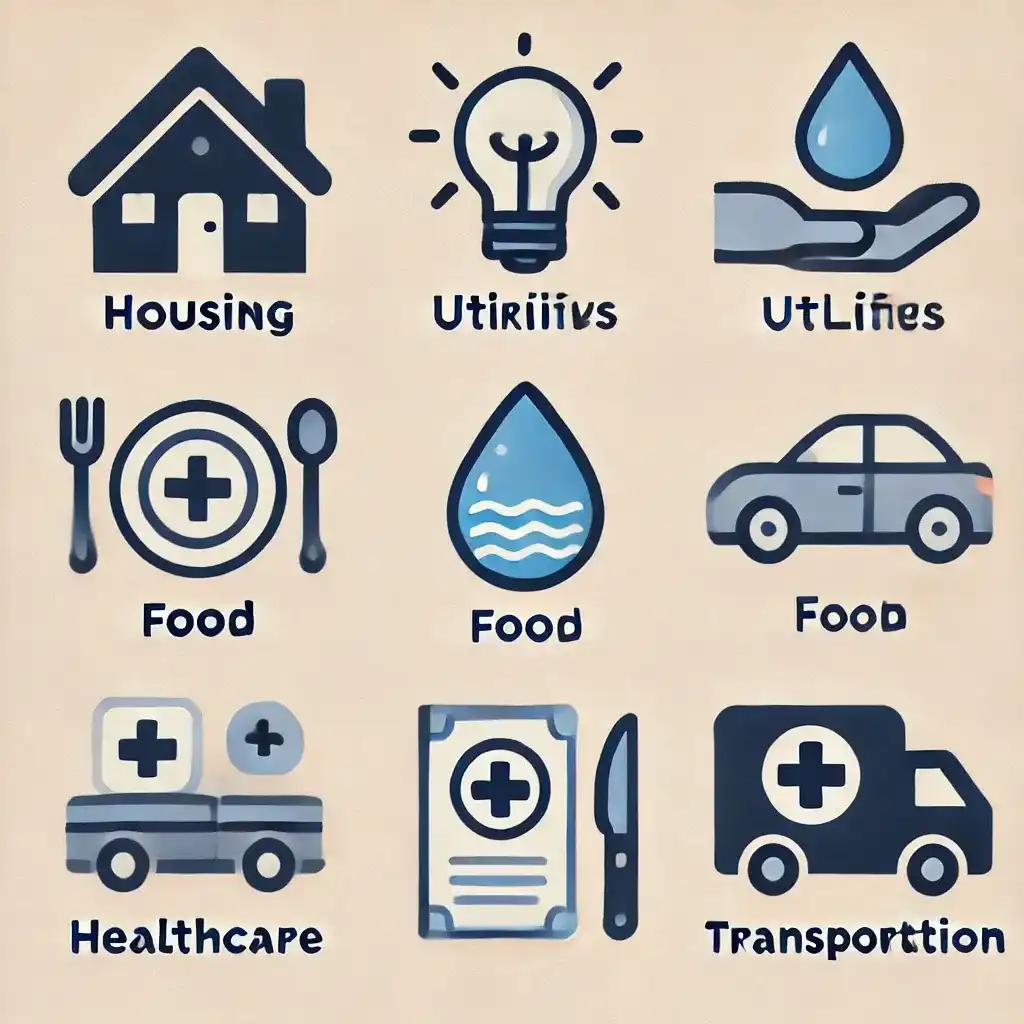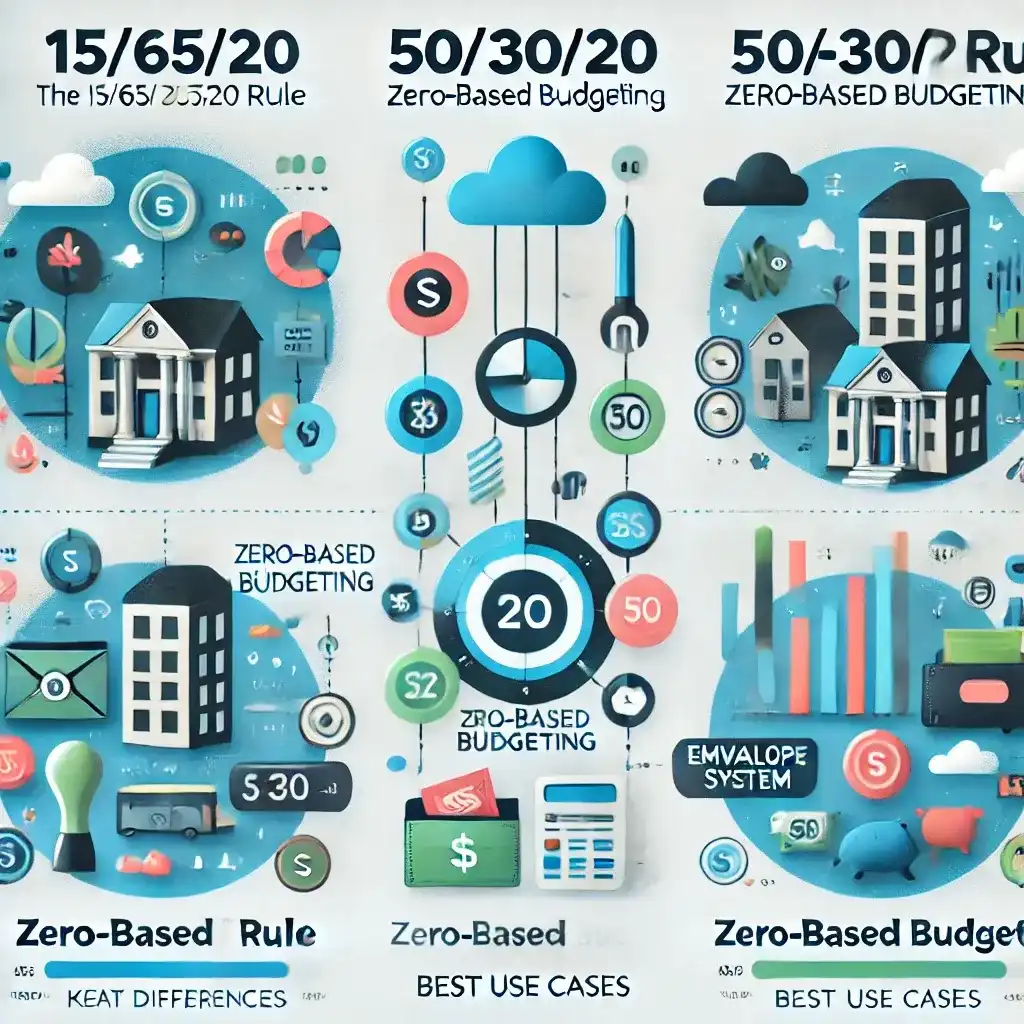15/65/20 Rule Money: The Smart Way to Budget Your Finances
Managing money can be tricky, but the 15/65/20 rule money simplifies budgeting for everyone. This rule divides your income into three parts: 15% for savings, 65% for essential expenses, and 20% for discretionary spending. It helps maintain financial stability and ensures a better future. Whether you’re new to budgeting or looking for a better way to manage money, this rule offers a simple yet effective approach.
Understanding personal finance can be overwhelming, but with structured planning, you can avoid financial pitfalls. This budgeting method ensures that you’re saving for the future, covering necessary expenses, and still enjoying life without guilt. It’s an adaptable rule that works for individuals of all income levels.
What is the 15/65/20 Rule Money?

The 15/65/20 rule is a modern budgeting strategy designed to keep your finances in check. Here’s how it works:
| Category | Percentage | Purpose |
|---|---|---|
| Savings | 15% | Emergency fund & future goals |
| Essential Expenses | 65% | Rent, food, bills, healthcare |
| Discretionary Spending | 20% | Entertainment, dining out, travel |
Breakdown of Each Category
1. Savings (15%)

This portion is crucial for your financial security. It includes:
- Emergency Fund: Covers unexpected expenses like medical bills, car repairs, or job loss.
- Retirement Savings: Investing in a 401(k) or IRA secures your future.
- Investments: Stock market, real estate, or mutual funds for wealth growth.
- Debt Repayment: If applicable, extra payments toward loans to reduce interest costs.
| Savings Type | Purpose |
|---|---|
| Emergency Fund | Covers unexpected financial crises |
| Retirement | Ensures financial security in old age |
| Investments | Grows wealth over time |
| Debt Repayment | Reduces interest burden |
2. Essential Expenses (65%)

The majority of your income goes to necessities, ensuring a comfortable lifestyle:
- Housing: Rent or mortgage payments.
- Utilities: Electricity, water, internet, and phone bills.
- Food: Groceries and household essentials.
- Healthcare: Insurance, medical bills, and prescriptions.
- Transportation: Car payments, fuel, or public transport costs.
| Essential Expense | Estimated % of Budget |
|---|---|
| Housing | 30-35% |
| Utilities | 5-10% |
| Food | 10-15% |
| Healthcare | 5-10% |
| Transportation | 5-10% |
3. Discretionary Spending (20%)

This portion allows you to enjoy life while staying within budget:
- Dining Out: Restaurants, takeout, and coffee shop visits.
- Entertainment: Streaming services, movies, and hobbies.
- Travel: Vacations, weekend trips, or visiting family.
- Shopping: Clothes, gadgets, and luxury items.
| Discretionary Expense | Examples |
|---|---|
| Dining Out | Restaurants, coffee shops |
| Entertainment | Movies, streaming, concerts |
| Travel | Vacations, weekend getaways |
| Shopping | Clothes, gadgets, accessories |
Why Use the 15/65/20 Rule?
- Simple & effective – No complex calculations, just basic percentages.
- Better money management – Helps allocate funds wisely.
- Savings growth – Ensures you save 15% for financial security.
- Debt control – Prevents overspending on unnecessary expenses.
- Flexibility – You can adjust percentages based on income and goals.
- Reduces financial stress – Knowing where your money goes brings peace of mind.
How to Apply This Rule
- Calculate your monthly income after taxes.
- Allocate 15% to savings – This includes emergency funds and long-term investments.
- Dedicate 65% to essential expenses – Rent, groceries, utilities, and necessary bills.
- Use 20% for discretionary spending – Enjoy entertainment, hobbies, and travel within limits.
- Review and adjust – If necessary, tweak your budget to align with financial goals.
Tips for Better Money Management
- Track expenses – Use budgeting apps to monitor spending.
- Cut unnecessary costs – Reduce impulse buying.
- Increase savings gradually – Start with 15% and increase as income grows.
- Automate savings – Set up automatic transfers to savings accounts.
- Use cash for discretionary spending – Helps control overspending.
- Set financial goals – Short-term (vacations), mid-term (buying a car), and long-term (homeownership, retirement).
Is the 15/65/20 Rule Right for You?
This rule is great for those who:
- Struggle with managing money effectively.
- Want to balance essential expenses and entertainment.
- Need a simple and structured way to handle finances.
- Prefer a clear guideline without complex financial planning.
- Aim to build wealth over time with consistent savings and investments.
Alternative Budgeting Methods

While the 15/65/20 rule money is effective, some people might prefer other budgeting styles:
- 50/30/20 Rule: 50% needs, 30% wants, 20% savings.
- Zero-Based Budgeting: Every dollar is assigned a purpose.
- Envelope System: Cash-based budgeting for strict expense control.
- 80/20 Rule: 80% expenses, 20% savings.
Conclusion
The 15/65/20 rule money is a practical way to manage finances, ensuring savings, essential expenses, and personal enjoyment remain balanced. By following this strategy, you can secure a stable financial future while enjoying life’s little pleasures.
Financial freedom begins with smart money management. Whether you’re just starting your financial journey or looking for a better way to budget, this rule offers a simple, effective, and flexible approach. Start applying it today and watch your financial health improve!
FAQs
1. What is the 15/65/20 rule in money management?
The 15/65/20 rule is a budgeting method that divides income into three categories: 15% for savings, 65% for essential expenses, and 20% for discretionary spending. It helps manage finances effectively while ensuring future savings.
2. How does the 15/65/20 rule compare to the 50/30/20 rule?
The 50/30/20 rule allocates 50% to needs, 30% to wants, and 20% to savings, while the 15/65/20 rule focuses more on essential expenses (65%) and slightly less on savings (15%). The 15/65/20 rule is better suited for individuals with higher fixed costs.
3. Who should use the 15/65/20 rule?
Anyone looking for a structured and simple budgeting strategy can use this rule. It works best for individuals with steady incomes and high essential expenses, such as rent and utilities.
4. Can I adjust the percentages in the 15/65/20 rule?
Yes, this rule is flexible and can be adjusted based on your financial goals. For example, if your expenses are lower, you can increase your savings percentage.
5. What if my essential expenses exceed 65%?
If your necessary expenses go beyond 65%, consider cutting discretionary spending or finding ways to increase income. Reviewing your budget regularly can help maintain financial balance.
6. How can I effectively save 15% of my income?
- Automate savings to a separate account.
- Reduce unnecessary expenses to free up more money.
- Invest in long-term options like mutual funds or retirement plans.
7. Is the 15/65/20 rule good for low-income earners?
Yes, but low-income earners may find it challenging to allocate 15% to savings. They can start small, adjusting the rule to 10/70/20 or 5/75/20 until their income grows.
8. Can businesses use the 15/65/20 budgeting rule?
While businesses use different budgeting strategies, they can adapt this rule by allocating revenue to operational costs (65%), reinvestment (15%), and discretionary expenses (20%).
9. What are some tools to track my budget using this rule?
You can use budgeting apps like:
- Mint (for expense tracking)
- YNAB (You Need a Budget) (for strict budgeting)
- Personal Capital (for investment tracking)
10. How often should I review my budget?
It’s best to review your budget monthly to ensure you’re staying on track and adjust percentages if needed.
Pingback: Genesis Credit Management
Pingback: Divorce Due to Overspending: Legal and Financial Consequences Explained - ZCashHub
Pingback: Ultimate Guide to Blue Collar Side Hustles in 2025 - ZCashHub
Pingback: Save Smarter: Money6x.com Save Money Tips & Tricks - ZCashHub